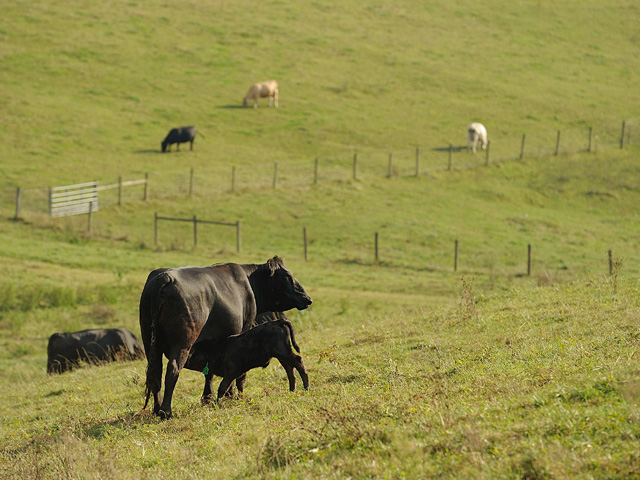Ask the Vet
No Bulls Allowed
We have a 3-year-old Angus bull that keeps nursing the cows. We tried a product called "Kant-Suk Calf Weaner" and it worked for about eight days, but it came off. I can't find anything recommended specifically for bulls. There are lots of barbaric treatments on the internet, but I am not comfortable with any of them. Do you have any suggestions?
DR. MCMILLAN'S ANSWER:
If this bull runs with cows all year long, my first step would be to remove him and work toward a controlled calving season. This solves the problem for now, and the behavior may not return when he is added back to the herd.
P[L1] D[0x0] M[300x250] OOP[F] ADUNIT[] T[]
I have detailed the many advantages of a controlled calving season numerous times in the past, but I want to stress that it is THE foundation of managing a cow-calf operation. Every other management practice is linked in some way to a controlled calving season.
What this bull is doing is a bad habit at any time, but if he nurses a cow prior to calving, her calf may not get adequate colostrum. This can lead to a whole different kind of disaster.
So now, finally, to your question. I know of no device designed specifically to prevent bulls from nursing. There are bull rings made to be permanently installed in the nose, and these might slow or stop the nursing. There are devices made for calves with sharp points facing up to stick the cow when they try to nurse her. Whether altering a bull ring to copy this idea by welding points onto it would work, I do not know. Nor do I know if other issues might result from doing this.
Working off my theory that almost everything is at least a little bit inherited, I would be concerned that this trait might be passed on to the bull's calves. And since I know of no surefire "solution" to break him of this bad habit, selling the bull has to be high on my list of recommendations.
Other readers may have thoughts or suggestions, and I encourage them to share. Good luck. Let us know how this turns out.
**
Editor's Note:
Please contact your veterinarian with questions pertaining to the health of your herd or other animals. Every operation is unique, and the information in this column does not pertain to all situations. This is not intended as medical advice but is purely for informational purposes.
Write Dr. Ken McMillan at Ask the Vet, 2204 Lakeshore Dr., Suite 415, Birmingham, AL 35209, or email vet@progressivefarmer.com.
(c) Copyright 2021 DTN, LLC. All rights reserved.





